1. Sears
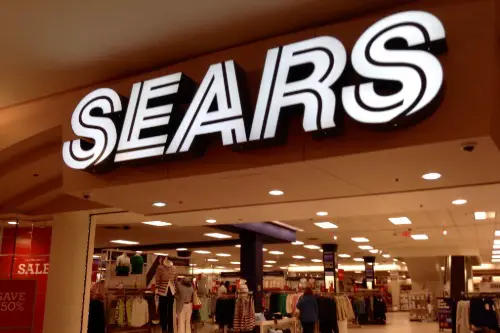
Once a dominant force in American retail, Sears is now an emblem of corporate decline. In the mid-20th century, Sears was an iconic brand known for its expansive catalog and its department stores that offered everything from clothing to home appliances. Sears was synonymous with convenience and affordability, and for many Americans, it represented a reliable source for quality goods. However, as the retail landscape began to shift in the 1980s and beyond, Sears failed to adapt, according to the Financial Times. The rise of big-box retailers like Walmart and Costco, as well as the explosive growth of online shopping, posed significant challenges to Sears’ business model.
In the 2000s, Sears’ decline became more evident. The company’s failure to modernize its stores, embrace e-commerce, and improve its product offerings left it vulnerable to competitors. Meanwhile, its focus on cost-cutting measures and its reliance on outdated inventory systems created a disconnect with customers. In 2018, Sears filed for bankruptcy, and while there have been attempts to revitalize the brand through store closures and restructuring, Sears has continued to struggle. Today, the brand exists in a diminished form with only a handful of locations remaining open, and many believe its fate is sealed. Sears’ inability to evolve in an era of technological advancement and shifting consumer habits has made it a tragic example of a once-great brand now fighting for survival.
2. J.C. Penney

J.C. Penney is a name that used to evoke thoughts of affordable department store shopping, but the brand has faced a series of challenges in recent years that have left it fighting for its survival. Founded in 1902, the retailer was a major player in the American retail landscape, offering a wide range of products at reasonable prices. However, the brand’s downfall began in the early 2000s, when it started struggling to maintain its relevance with younger shoppers. It tried various strategies to stay afloat, including shifting its focus to more upscale items, but it ultimately alienated its core customer base. A major misstep came in 2011 when former Apple executive Ron Johnson became CEO and tried to completely revamp the store by eliminating sales and discounting strategies in favor of “everyday low prices.” The move backfired, leading to a dramatic decline in sales and customer loyalty.
After struggling to regain consumer trust, J.C. Penney filed for bankruptcy in 2020, a direct result of the retail industry’s broader challenges and the impact of the COVID-19 pandemic. Since then, the company has attempted to stabilize by reducing its store footprint and emphasizing online sales. However, its efforts to compete with e-commerce giants like Amazon and fast-fashion brands like Zara and H&M have proven to be insufficient. Just last year, The U.S. Sun revealed that three stores were closing doors. While there are still some locations and a loyal customer base, J.C. Penney’s brand recognition continues to slip, and it faces a tough road ahead. The retailer’s attempts to reimagine itself have largely failed to resonate with the modern consumer, leaving many to question whether it can survive much longer in a rapidly evolving retail environment.
3. Blockbuster
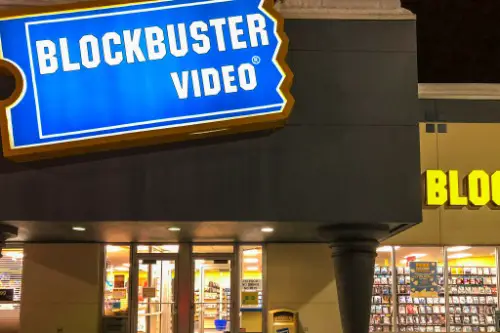
Blockbuster was once the epitome of home entertainment, with thousands of video rental stores across the country. In the 1990s and early 2000s, the company revolutionized how people accessed movies and video games, and its iconic blue-and-yellow stores were a familiar sight in neighborhoods nationwide. For a time, Blockbuster was an unassailable leader in the movie rental market, offering a vast selection of DVDs and VHS tapes. However, as digital streaming services began to gain popularity in the mid-2000s, Blockbuster failed to make the shift to the new business model, according to Forbes. While companies like Netflix embraced online rentals and streaming, Blockbuster stuck to its physical storefronts, which ultimately became a liability.
Blockbuster’s inability to pivot fast enough allowed competitors to quickly gain a foothold in the streaming market. By the time the company tried to launch its own online service, it was already too late. The final blow came in 2010 when Blockbuster filed for bankruptcy, unable to compete with the likes of Netflix, Hulu, and Amazon Prime. Today, only one Blockbuster store remains open in Bend, Oregon, serving as a nostalgic reminder of a time when video rental stores were a vital part of American culture. The brand’s demise is a textbook example of how technological advancements can disrupt even the most established companies if they fail to innovate quickly enough.
4. Toys “R” Us
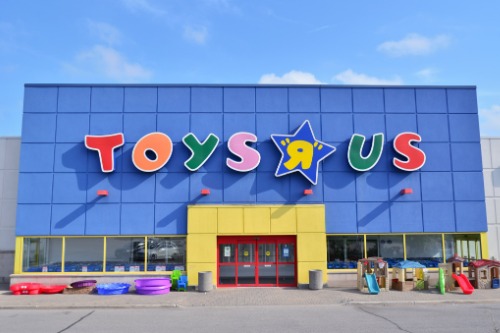
Toys “R” Us was a beloved childhood staple for many, offering an enormous selection of toys in its massive stores across the country. Founded in 1948, the company quickly grew to become the dominant toy retailer in the United States. For decades, kids and parents alike flocked to Toys “R” Us for birthdays and holidays, and its massive stores, filled with colorful aisles and giant giraffe mascot Geoffrey, were synonymous with fun and excitement. However, the rise of online shopping, particularly through Amazon, posed a serious challenge to the company in the 2000s and beyond. With consumers increasingly choosing the convenience of home delivery over in-store shopping, Toys “R” Us saw a sharp decline in foot traffic.
Compounding this issue, Toys “R” Us struggled with its heavy debt load after a leveraged buyout in 2005, which left the company with little room to invest in innovation. It also failed to adapt to the changing demands of consumers, such as offering more competitive pricing and a stronger online presence. In 2017, after years of declining sales and profitability, Toys “R” Us filed for bankruptcy, the BBC reported. Despite efforts to reorganize and make a comeback, the company ultimately shut down many of its stores in 2018. Though there has been talk of reviving the brand, its legacy is tarnished, and many question whether it can ever regain its former glory in an era dominated by e-commerce and shifting shopping habits.
5. RadioShack

RadioShack was once the go-to destination for all things electronics, particularly for hobbyists and DIY enthusiasts. Founded in 1921, the company became a trusted name in the world of consumer electronics, offering everything from batteries and resistors to radios and computers. For years, RadioShack was known for its small, neighborhood stores, which were often staffed by knowledgeable employees who could help customers with technical questions. However, as consumer technology advanced, RadioShack struggled to keep up with the changing market. The rise of big-box retailers like Best Buy, along with the increasing popularity of online shopping, began to erode its market share in the 2000s.
The company’s struggles were further compounded by poor management decisions, including a failed attempt to rebrand itself as a destination for smartphones and accessories. RadioShack attempted to redirect the company with the departure of their chief executive in 2011, according to The New York Times. They then filed for bankruptcy twice, in 2015 and again in 2017, after failing to effectively modernize its product offerings and store designs. While some RadioShack stores continue to exist, often in smaller formats or through partnerships, the brand is a shadow of its former self. The company’s inability to transition from its outdated model to a more modern retail strategy has led to its steady decline. RadioShack’s once-thriving business was undermined by a failure to keep pace with technological trends, leaving it struggling to survive in a market dominated by e-commerce giants and more nimble competitors.
6. Kmart

Kmart, once a giant in the retail industry, is now a distant memory for many Americans. In the 1960s and 1970s, Kmart was a trailblazer in the discount retail market, offering customers affordable products in large, sprawling stores. At its peak, Kmart had over 2,000 locations across the United States, competing directly with other retail giants like Walmart and Target. However, over time, Kmart began to lose ground due to a combination of poor management, outdated stores, and a failure to keep up with shifting consumer preferences. Kmart’s decline was further exacerbated by the rise of e-commerce and the increasing dominance of Walmart and Target in the discount retail space.
In the 2000s, Kmart merged with Sears, hoping to create a retail powerhouse that could better compete with its rivals. Unfortunately, the merger did little to reverse Kmart’s fortunes. In 2002, Kmart filed for bankruptcy, and while it was able to recover somewhat, it continued to struggle. The company’s inability to innovate, coupled with its failure to adapt to the online shopping trend, led to a slow and painful decline. Today, Kmart has only a handful of stores remaining, and many believe that it’s only a matter of time before it ceases to exist entirely. The brand’s collapse serves as a stark reminder of how the retail landscape has shifted, leaving those unable to adapt left behind.
7. Polaroid
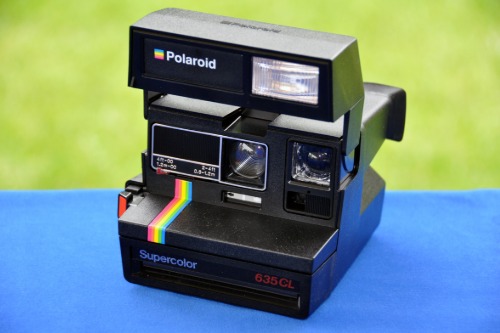
Polaroid once stood at the forefront of instant photography, captivating consumers with its groundbreaking cameras that allowed people to take a picture and watch it develop in their hands. The brand’s instant cameras became a cultural phenomenon in the 1970s and 1980s, becoming a must-have item for parties, holidays, and family moments. The brand’s name was synonymous with capturing memories on the spot. However, as digital photography began to take over in the 1990s and 2000s, Polaroid’s decline began. The company failed to pivot quickly to digital cameras and other emerging technologies, sticking to its traditional instant film format for far too long.
By the time Polaroid did try to jump on the digital bandwagon, it was too late. Competitors like Kodak and Sony had already cornered the digital camera market, and the rise of smartphones with built-in cameras made it difficult for Polaroid to remain relevant. In 2008, Polaroid announced that it would cease production of its instant film, marking a significant blow to the brand. Though the company has since tried to make a comeback, releasing a few instant cameras and trying to capitalize on retro nostalgia, it has failed to regain its former prominence. Polaroid’s struggle to adapt to the digital age and its inability to maintain innovation have left it in a precarious position.
8. Circuit City
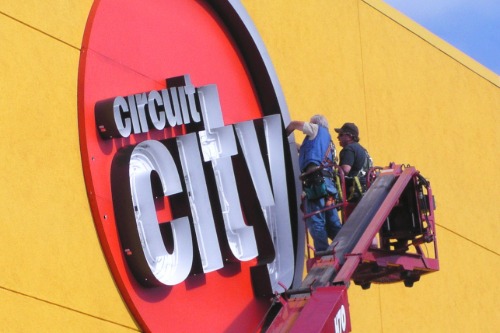
Circuit City was once one of the largest electronics retailers in the United States, offering everything from TVs and computers to appliances and mobile phones. Founded in 1949, the company was a household name throughout the 1980s and 1990s. It prided itself on its expansive stores, knowledgeable staff, and competitive pricing. However, the company’s downfall began in the early 2000s, as it faced increased competition from online retailers and big-box stores like Best Buy. In addition, Circuit City made the critical mistake of neglecting its customer service, which had once been a hallmark of its success. With staff cuts and diminished in-store expertise, Circuit City’s reputation began to erode.
In 2008, the company filed for bankruptcy and closed hundreds of stores, ultimately leading to its liquidation by 2009. Despite attempts to revive the brand in the years following its closure, Circuit City’s brand recognition diminished, and its efforts to reenter the market failed to gain traction. The company’s downfall highlights how quickly retailers can fall from grace when they fail to adapt to shifting consumer preferences and technological advancements. Circuit City’s inability to embrace e-commerce and its declining in-store experience ultimately made it a casualty in the retail war of the early 21st century.
9. Yahoo

Yahoo was once one of the most influential names on the internet, a pioneering force in the early days of the web. Founded in 1994 by Jerry Yang and David Filo, Yahoo became the go-to search engine, news aggregator, and email service for millions of users. At its peak in the late 1990s and early 2000s, Yahoo was a hub for everything from news and finance to sports and entertainment. Its once-dominant position in the internet space made it one of the most valuable companies in the world. However, as the internet evolved, Yahoo struggled to keep up with the rapid pace of change, particularly as Google emerged as the dominant search engine, leaving Yahoo’s core product, its search function, in the dust.
The company made several attempts to reinvent itself, trying to diversify into various areas such as media and advertising, but it was unable to maintain its former glory. Acquiring companies like Flickr and Tumblr didn’t pan out as expected, and Yahoo’s strategy was often seen as inconsistent. In 2016, Yahoo’s sale to Verizon for $4.8 billion marked the end of an era, with the company losing its identity in the process. Today, Yahoo still exists as a media company, but its once-iconic status in the tech world has faded. The brand’s inability to innovate quickly and respond to changing consumer needs, particularly in search and digital advertising, left it struggling to survive in an increasingly competitive market. Yahoo’s decline is a striking example of how even the most dominant tech companies can be overtaken if they don’t adapt to rapid industry shifts.
10. Wet Seal
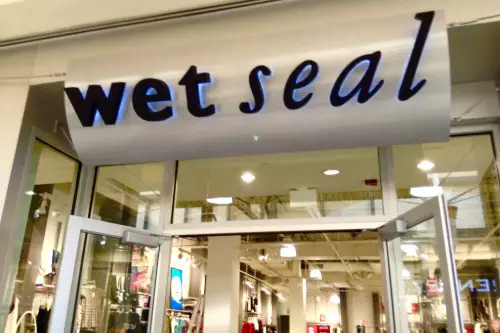
Wet Seal, once a leading fashion retailer for young women, has struggled to regain its footing in an increasingly competitive market. Founded in 1962, Wet Seal grew rapidly in the 1990s and early 2000s, positioning itself as a trendy, affordable brand catering to teenage girls and young women. The company’s success was built on its ability to offer fashionable clothing at prices that appealed to its target demographic. However, as fast-fashion giants like H&M, Zara, and Forever 21 rose to prominence, Wet Seal began to struggle. The brand failed to keep up with changing trends and, more critically, did not adapt its business model to the growing e-commerce market.
In 2015, Wet Seal filed for bankruptcy for the first time, closing many of its stores. Despite attempts to revive the brand through store reboots and a renewed focus on digital retail, Wet Seal’s position in the fashion world remained precarious. The rise of online retailers like ASOS and the decline of mall shopping took a toll on Wet Seal’s sales, and the company eventually filed for bankruptcy a second time in 2017. The brand’s inability to adapt to the new shopping realities and its reliance on physical stores led to its ongoing decline. Wet Seal’s fall from grace serves as a reminder of the volatile nature of the fast-fashion industry and the pressures of competing in a digital-first world.
11. Chuck E. Cheese
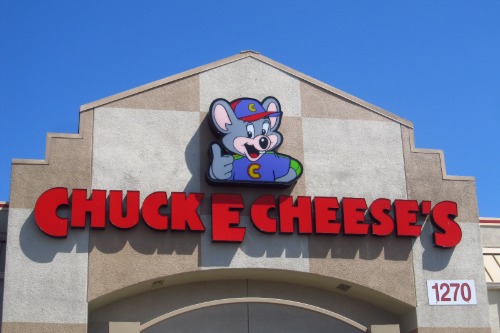
Chuck E. Cheese, the beloved chain of family entertainment centers, has been struggling in recent years, and the COVID-19 pandemic may have finally tipped the scales. Founded in 1977, Chuck E. Cheese became a favorite destination for birthday parties and family fun, offering pizza, arcade games, and animatronic shows featuring its iconic mascot. For decades, it was a popular go-to spot for children and parents alike. However, as tastes changed and new forms of entertainment emerged, Chuck E. Cheese began to face increasing competition from places like Dave & Buster’s and home-based entertainment options such as video games and streaming services.
The pandemic significantly impacted Chuck E. Cheese’s business, forcing the closure of many of its locations and pushing the company into bankruptcy in 2020. While it has made efforts to pivot to a more delivery-focused model, offering pizza through online orders and changing its branding, the company’s core business of in-person family entertainment may be permanently altered. The once-thriving chain has struggled to stay relevant in an increasingly digital world, and it remains unclear whether it can recover its former position in the marketplace.
12. Victoria’s Secret
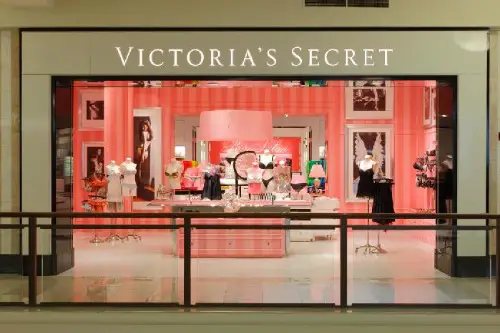
Victoria’s Secret was once the undisputed leader in women’s lingerie, but in recent years, the brand has struggled to maintain its dominant position in the market. Founded in 1977, Victoria’s Secret became known for its glamorous marketing, featuring supermodels in iconic runway shows. For decades, it was the go-to brand for women’s lingerie, offering a wide range of bras, panties, and sleepwear. However, the brand’s decline began as consumers increasingly sought more inclusive, body-positive brands that catered to a broader range of sizes, shapes, and personal styles. The Victoria’s Secret brand, which was heavily associated with a narrow beauty ideal, found itself losing ground to competitors like Aerie and ThirdLove.
The company’s struggle to adapt to changing consumer preferences was compounded by the rise of online shopping and shifting trends in the lingerie industry. The 2018 cancellation of its televised fashion show was a pivotal moment, as it signaled a shift away from the brand’s traditional marketing tactics. In 2020, the company announced it would close hundreds of stores, marking a clear indication of its financial troubles. Despite efforts to reposition itself as more inclusive and modern, Victoria’s Secret has found it difficult to recapture its former market dominance. The brand’s struggles highlight how quickly consumer preferences can shift, especially when they feel disconnected from a brand’s image.
13. Borders
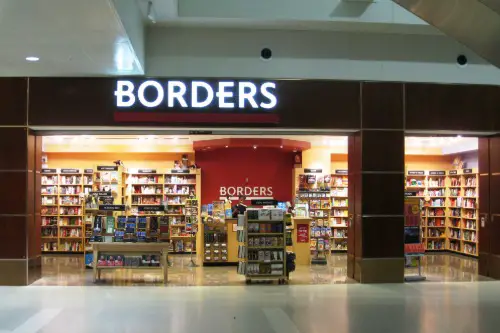
Borders was once a massive force in the world of bookselling, with hundreds of stores spread across the U.S. and beyond. Founded in 1971, the company offered a wide selection of books, music, and movies, and it became a favorite hangout for book lovers. In the 1990s and early 2000s, Borders was a prominent competitor to Barnes & Noble, and it was known for its spacious stores with coffee shops and cozy reading areas. However, Borders made a crucial misstep when it failed to embrace the digital revolution. While Barnes & Noble developed its own e-reader, the Nook, Borders didn’t act quickly enough and relied too heavily on physical book sales.
The rise of e-commerce, particularly Amazon, and the growth of digital books spelled the beginning of the end for Borders. In 2011, the company filed for bankruptcy and began liquidating its stores, ultimately closing down its remaining locations. Despite efforts to restructure, Borders couldn’t compete in the new digital age. The company’s inability to adapt to changing consumer habits and technological advancements left it unable to survive in the modern retail landscape.


